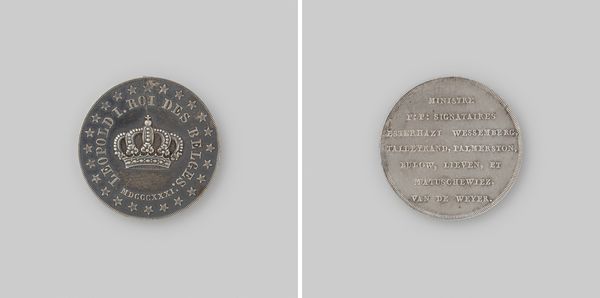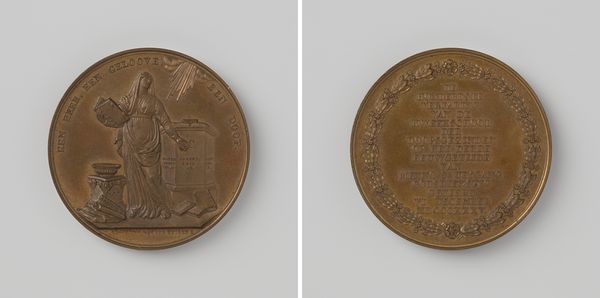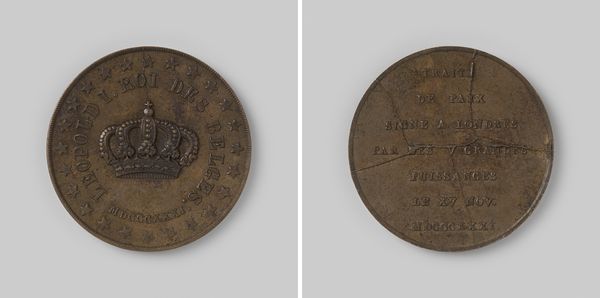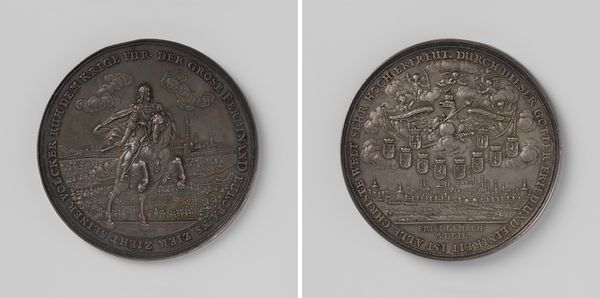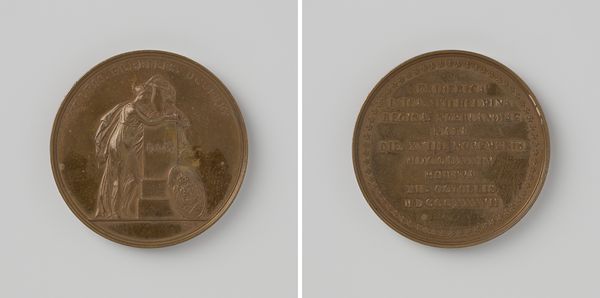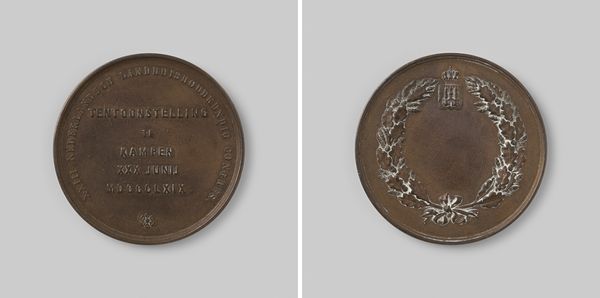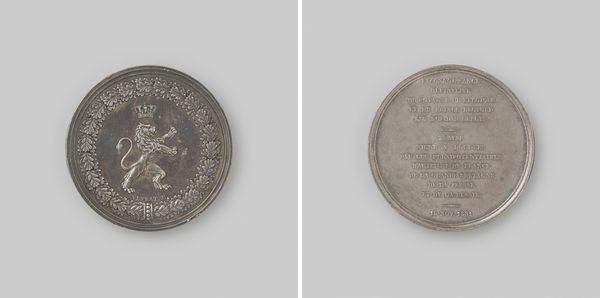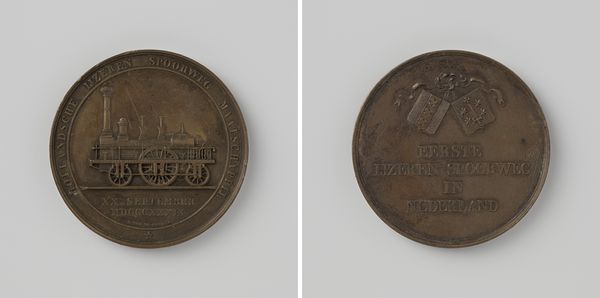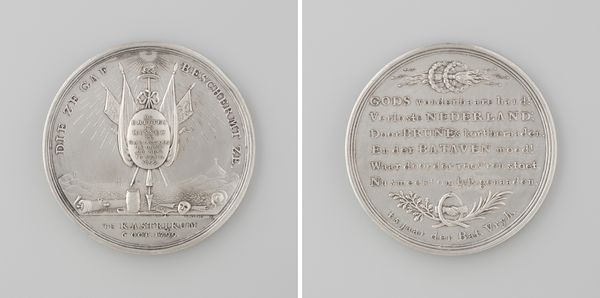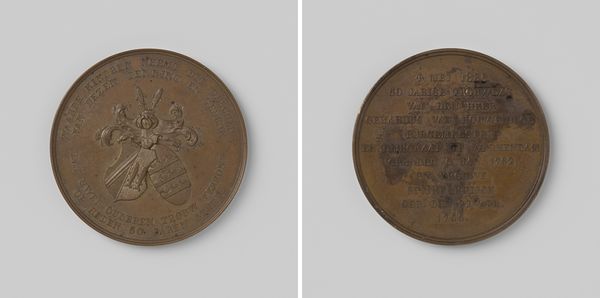
metal, sculpture
#
portrait
#
medal
#
neoclacissism
#
metal
#
historical fashion
#
sculpture
Dimensions: diameter 4.6 cm, diameter 3.8 cm, diameter 3.1 cm, weight 7.65 gr
Copyright: Rijks Museum: Open Domain
Curator: Let's turn our attention to this medal, “Genootschap van Barmhartigheid te Amsterdam," dating back to 1825. It's currently held at the Rijksmuseum. Editor: My first impression is somber. The silver-tone is austere and immediately makes me think of commemorative pieces, like a grave marker turned into a wearable object. Curator: Precisely! The anonymous artist crafted it from metal, showcasing Neoclassical style in its portraiture. We see the inscription "Genootschap van Barmhartigheid," which translates to Society of Mercy. I wonder, what’s the social context surrounding its production? Editor: Well, these charitable societies were very popular during that era. Wealthy citizens demonstrating public virtue and philanthropy. So the medal becomes a symbolic representation of belonging and active engagement within these networks. Think of the civic duty! It speaks to broader social reform efforts. Curator: Yes, consider also the industrial processes. The metal casting, the engraving: each choice reflects the capabilities and norms of production in 1825 Amsterdam. And let's note the materiality; it’s silver, not gold. What statements do the means make when compared with its production? Editor: Interesting... I can imagine the recipients valued this form of civic engagement, using it as a daily wearable to represent moral commitment, influencing the politics of representation and public imagery at the time. The weight of it against one’s chest almost makes the sentiment more literal, even! Curator: Indeed. This small medal tells a larger story about labor, social standing, and, in essence, what materials were viewed as significant. It questions this idea about artistic labor that continues to permeate the modern eye. Editor: Right, challenging those high art/craft distinctions to highlight societal influence. This seemingly simple medal prompts significant questions about history and society, right? Curator: Absolutely! It highlights connections, materiality, the dynamics that shaped charitable initiatives.
Comments
No comments
Be the first to comment and join the conversation on the ultimate creative platform.


